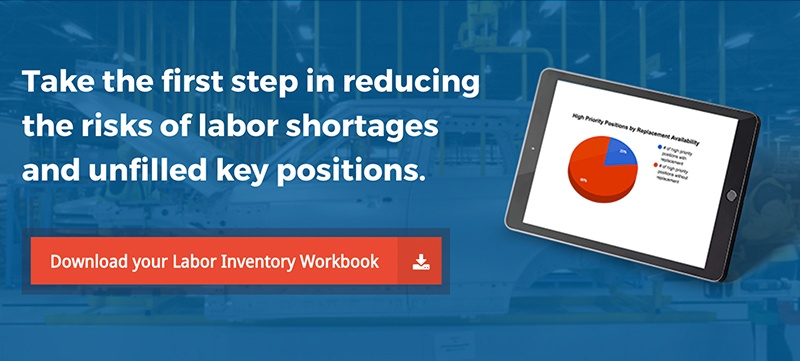When you look at the big picture of the American job climate, it's more difficult than ever to predict long-term trends regarding which industries will keep employing workers and which won’t. Even sectors that look perfectly stable can sometimes be disrupted - for example, the tech sector is difficult to predict because the current technologies we use are changing rapidly and new transformational products seem to be introduced almost daily.
One sector that remains promising for American workers, however, is manufacturing.
Why is the Manufacturing Sector so Strong today?
Our need for building supplies and raw materials is not going away anytime soon, and there remain many companies that need workers in this category. This is becoming especially true as the global and political environment is changing. For example, today many companies are taking a more rationalized approach to their manufacturing operations and placing facilities closer to their customers instead of simply outsourcing operations to a country which boasts lowest labor costs.
A Bullish Forecast Out Of Michigan
For example, ironically one region in the U.S. where manufacturing remains strong, is the Midwest. The Petoskey News-Review, a local newspaper in Northern Michigan, reported that manufacturing in Michigan grew at a rate of 8.6 percent in 2015, far stronger than the economy as a whole.
Jim Tisdel, director of corporate and community education at North Central Michigan College, noted that jobs were opening up in any number of positions, not just on the factory floor. Manufacturing companies were hiring engineers, sales reps, truck drivers, customer service employees, maintenance employees, HR professionals and more.
The jobs themselves are changing however, and running a manufacturing business requires a wide variety of highly skilled people from CNC Machinists to Programmers and Welders with very specialized expertise and certifications.
What’s also becoming evident is that even during uncertain periods, companies still require personnel in key roles in order to maintain operations and serve customers.
Underlying Market Factors
There are many reasons that manufacturing continues to thrive. The News-Review identified a few key reasons including:
- low gas and energy prices,
- investors looking for new opportunities and,
- a rise in temporary staffing openings.
Tisdel also noted that the rise of new technologies was opening the door for manufacturers to invest in new machinery for even greater productivity.
"Many of the new positions and growth in manufacturing are coming from advanced systems like CNC, robotics, quality systems and computer big data systems," he explained. "These positions, along with the more traditional positions like welding, electronics, and carpentry, require skilled laborers and certifications."
How Can Contingent Labor Help the Manufacturing Industry?
The old approach to manufacturing staffing was to place a premium on permanent, full-time positions. Now, though, the climate is different.
Workers are also becoming more comfortable with and more open to temporary jobs that give them greater autonomy over their work lives. And companies are using contingent staffing solutions to solve a variety of challenging business needs from reducing costs of labor to seasonal staffing needs and to solve labor shortage challenges by bringing in labor from outside of the area.
What this all boils down to is as long as industries keep evolving, the idea of a single “silver bullet” solution is an anachronism and a variety of permanent and temporary staffing options are needed in any manufacturing company’s business continuity toolbox.








1 Comment
Click here to read/write comments